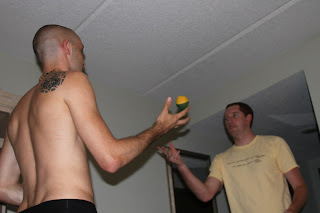8:00 – 9:00 AM: Global Research and Conservation Programs at the Georgia Aquarium.
Presenter: Dr. Bossart.

9:00 AM – 11 AM: Manatees: Threats and Management. An inside look at pathologic and forensic investigations, and a discussion on how findings influence management decisions.
Presenter: Dr. Martine de Wit, Florida Fish and Wildlife Conservation Commission, Marine Mammal Pathobiology Laboratory, St. Petersburg, Florida.
11 AM -- Noon: Early Lunch.

Noon – 3:00 PM: Necropsy Lab. Examination of a Range of Species of Marine Mammals that Died in the Field due to a Wide Array of Stressors. (Marine Mammal Necropsy Facility).
Instructors: Drs. Bossart, Martineau, de Wit, and Goldstein, with the HBOI Marine Mammal Group.
We were given the opportunity to perform necropsies on a pygmy sperm whale, bottle nose dolphin, manatee, sea otter, and sea lion. I spent most of my time working on the whale. It was hot and stinky but a lot of fun. We have been asked not to post any pictures for PR reasons…

3:00 – 5:00 PM: Post Office Trip for Shipping things home.
5:00 – 5:30 PM: Aquatic Unit Wrap up Discussion
5:30 – 6:00 PM: **** Finish and Turn in Course Evaluations!!! ****

6:00 – 7:00 PM: Barbeque Dinner.
We had a great dinner complete with lots of singing and dancing by people from all over the world. Nicole’s parents were super nice and donated a case of fancy beer to the party. Needless to say, it was a great time!
Evening: The remainder of the evening was spent packing up and preparing for our trip to Tanzania!

 From Dubai to Dar es Salaam I sat with Amelie (Canada). While taking off we were able to see the worlds tallest building and some of the other crazy architecture of Dubai. I spent most of the 5 hour flight playing video games and sleeping.
From Dubai to Dar es Salaam I sat with Amelie (Canada). While taking off we were able to see the worlds tallest building and some of the other crazy architecture of Dubai. I spent most of the 5 hour flight playing video games and sleeping.
 6:45 pm: Settle into lodgings (Landmark Hotel)
6:45 pm: Settle into lodgings (Landmark Hotel)















































